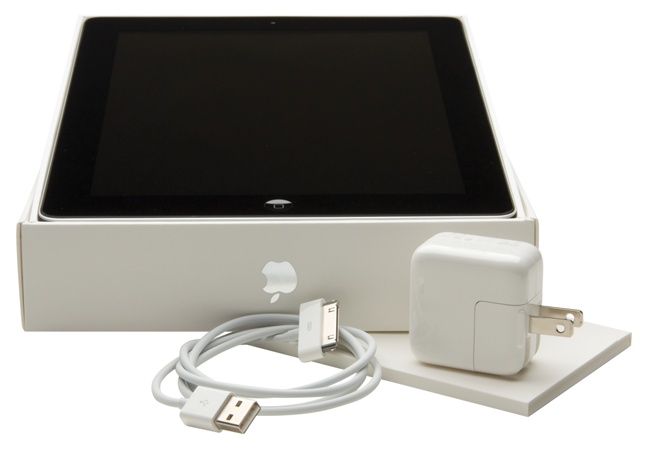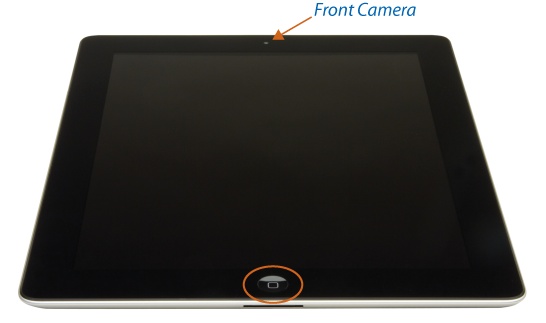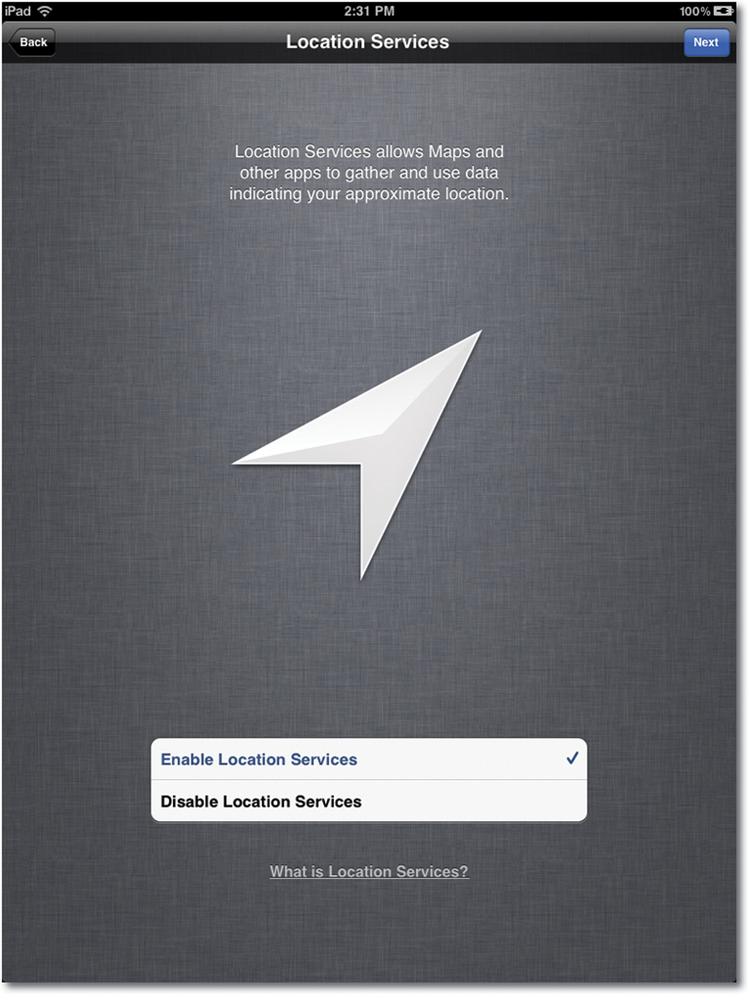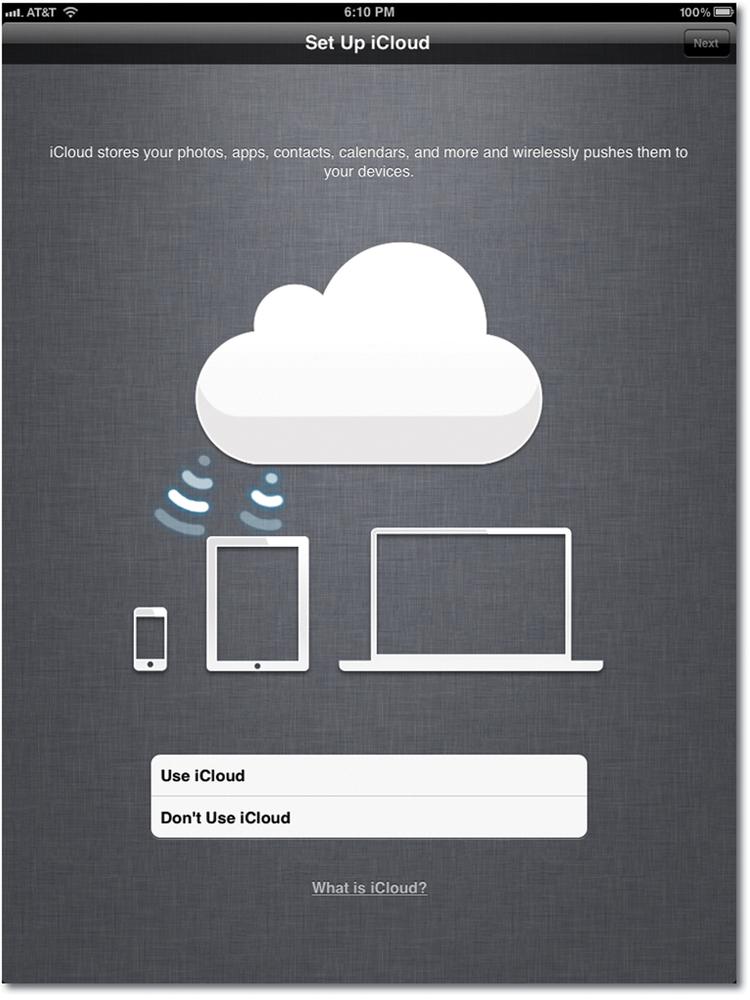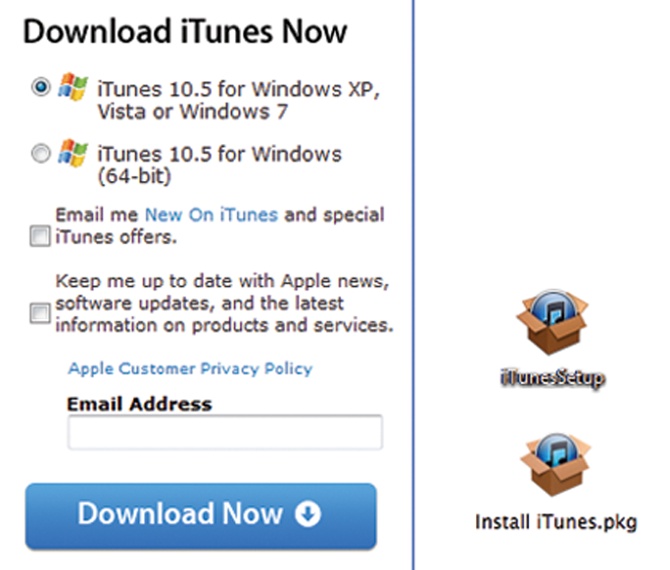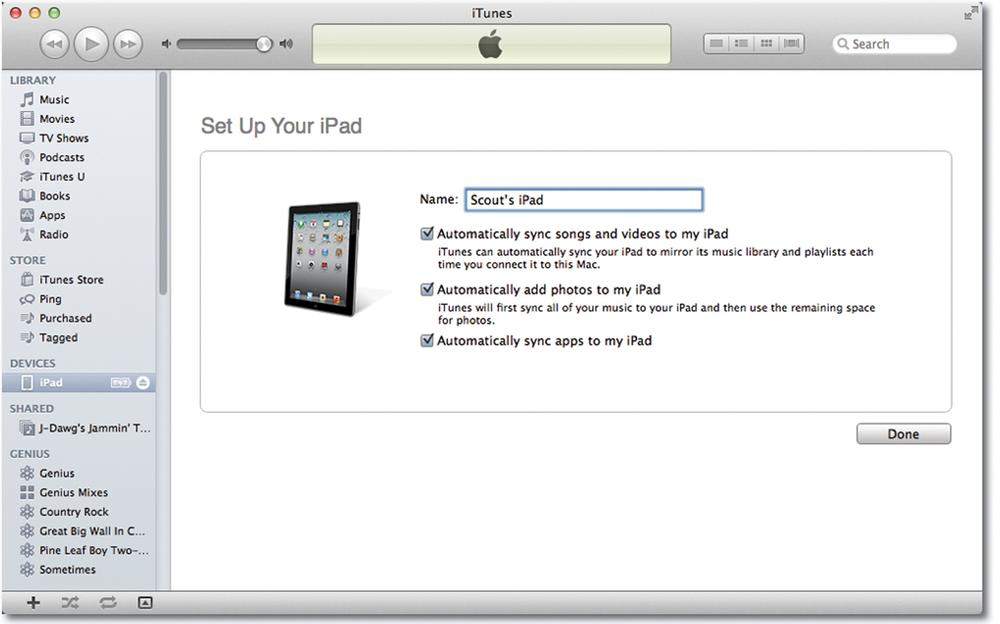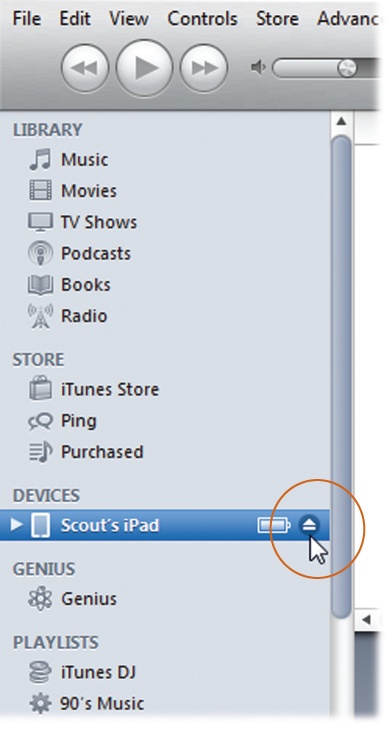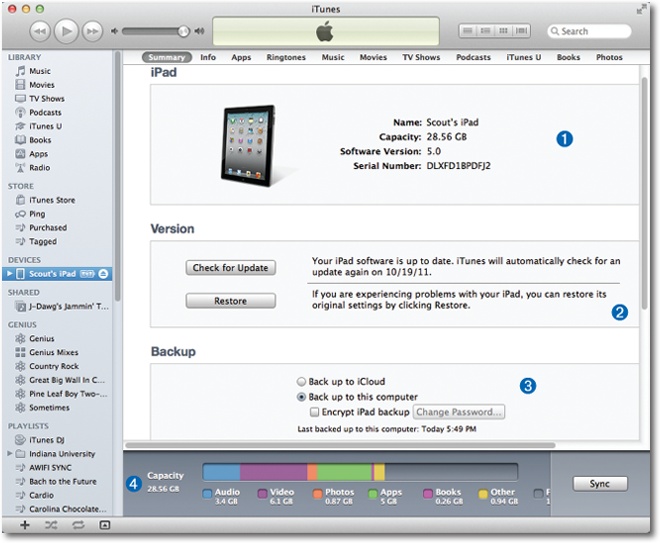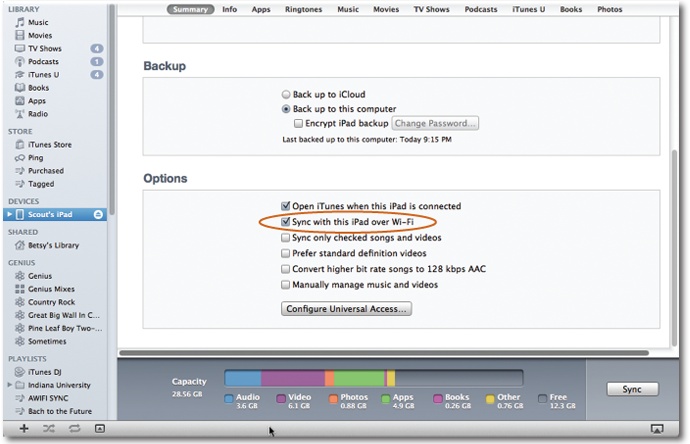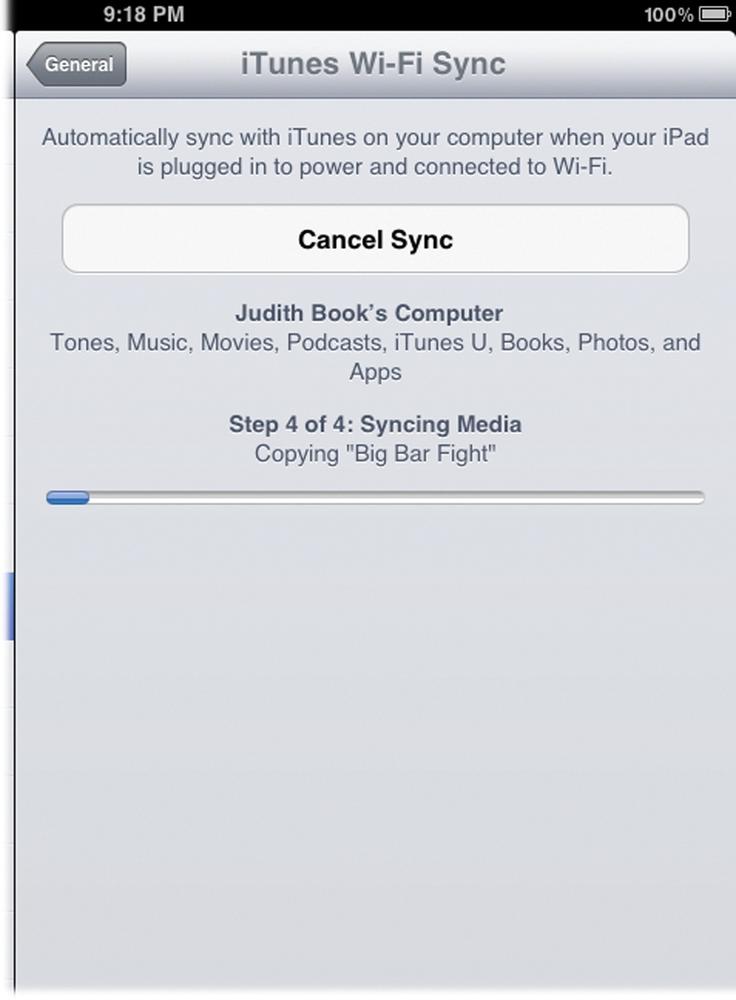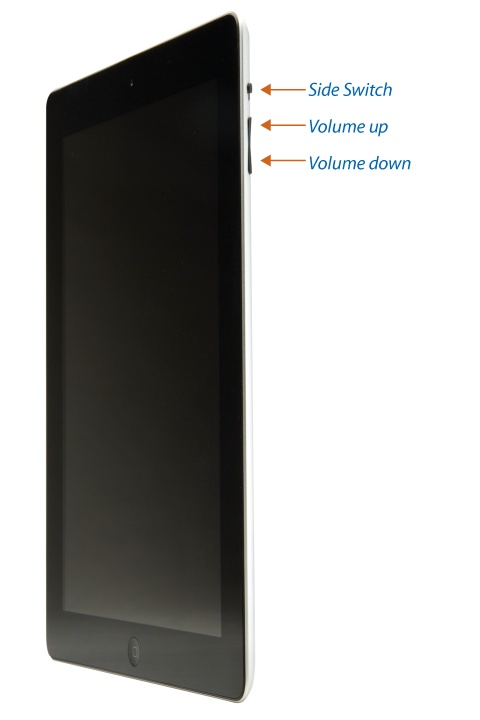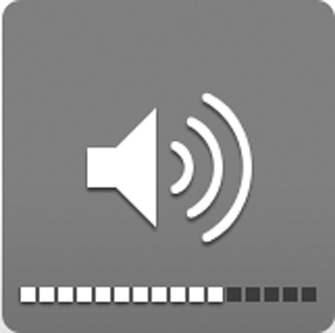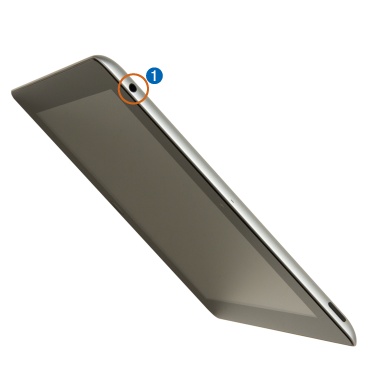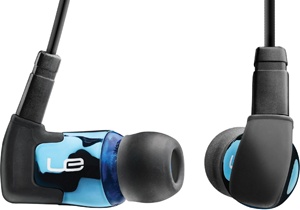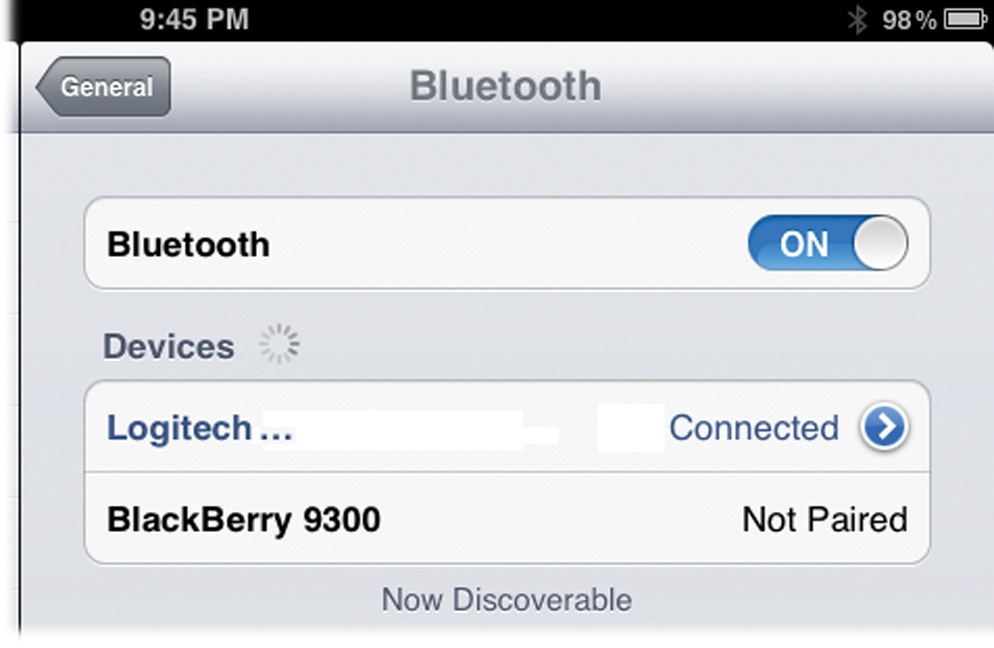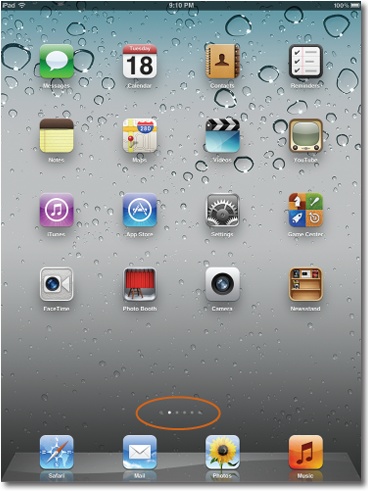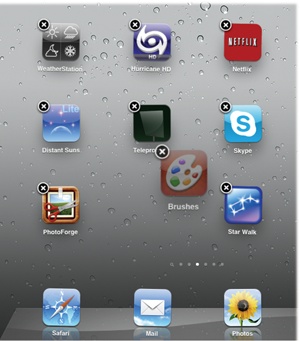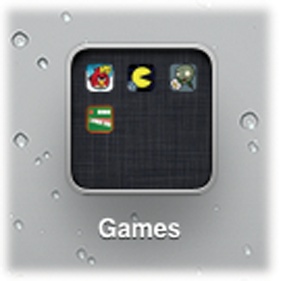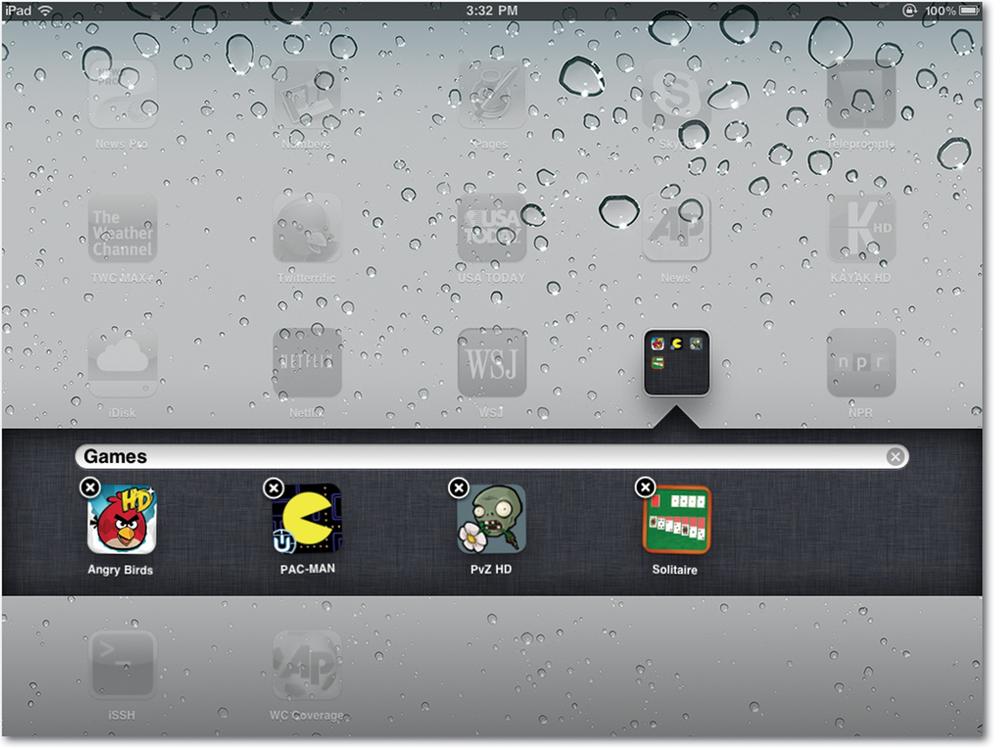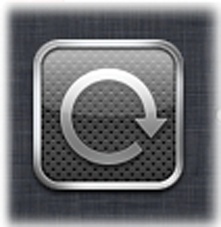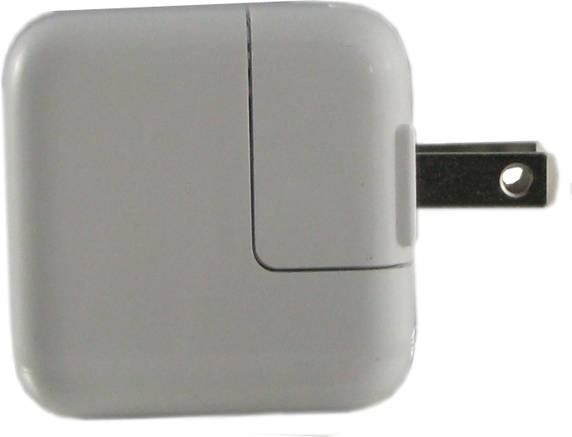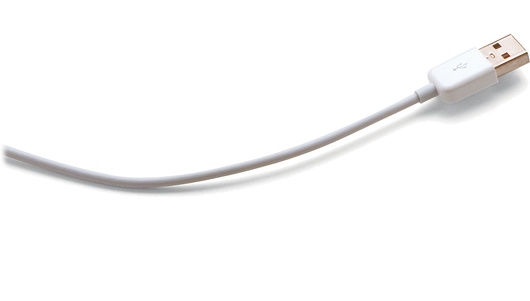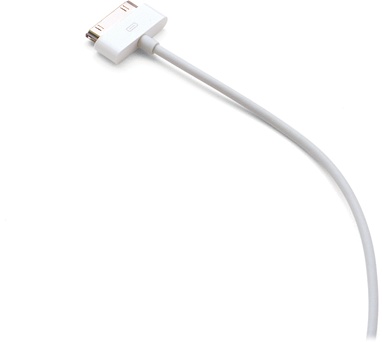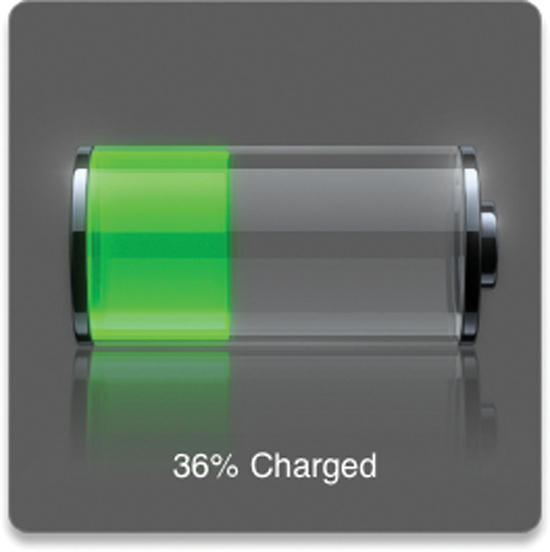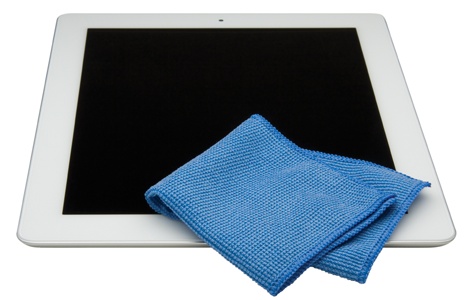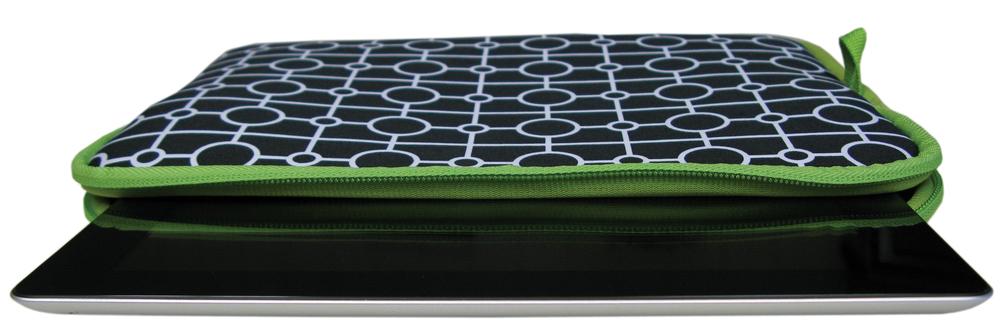Chapter 1. Get to Know Your iPad
Today, iPads pop up everywhere you look—in college dorms, doctor’s offices, construction sites, kitchens—and now, in your very own hands.
Since its arrival in early 2010, Apple’s tablet computer has been adopted by millions of people, and adapted in countless ways. Whether it’s showcasing your neighbor’s vacation photos or describing faraway lands in travel apps like 1,000 Places to See Before You Die, an iPad can whisk you away to new worlds. But before you can take off with your own iPad, you need to learn a few basics.
That’s where this book comes in. In this chapter, you’ll learn to navigate the iPad itself so you can find the programs you want to use. You’ll also find out how to link your ‘Pad to your computer to load it up with all your stuff, and how to make sure you get it charged up for a full day of work, play, or both.
It’s said that a journey of a thousand miles starts with a single step. So let your first step be turning on your new iPad. To learn how to do that, turn the page.
Turn the iPad On and Off
Think of Apple’s iMac, iPhone, and iPod Touch. In addition to starting with “i,” all these products are sleek gadgets with a minimum of buttons to disrupt their smooth skin. The iPad is no exception.
Run your finger along the iPad’s top edge and you’ll find a small black button on the right (circled). It’s got a long name: On/Off, Sleep/Wake.
Here’s what it does:
It turns the iPad off and on. To turn your iPad off completely—so that it gobbles no power at all—press and hold this button down until you see an on-screen arrow confirming your request. Touch the arrow with your finger and slide it along the screen from left to right. If you’re not going to use your ‘Pad for a few days, this total shutdown is the way to conserve as much battery life as possible.
To turn the iPad back on, press the On/Off button again for a second or two, until you see the Apple logo. After a minute or so of boot-up gyrations, you’re back in business.
1t puts the iPad to sleep and wakes it up. Tap the button briefly to turn off the iPad’s screen and put it in power-saving Sleep (standby) mode. To wake the iPad from its power nap, quickly press the button again. (You may also need to wake your iPad if you leave it untended for more than a few minutes, because it goes to sleep all by itself to save power. To change its nod-off settings, see General.)
Whenever you turn on the iPad or wake it up from its electronic slumber, you end up on a locked Home screen (unless you have one of Apple’s Smart Covers; see Protect Your iPad). To get to the iPad’s goodies, swipe your finger along the slider in the direction of the arrow. Why does the Home screen lock itself? Because on a touchscreen device, one unintended tap when the ‘Pad is in your briefcase or bag can turn on a program without you knowing it, and poof, there goes that battery charge.
Find the Home Button
There’s only one switch on the front of the iPad: the Home button (circled below). This round, gently indented switch sits in the bottom-center of the iPad’s black or white picture frame (known as a bezel in geek-speak). You’ll probably use this button more than any other in your iPad adventures.
The Home button handles a few tasks. For one, it always takes you Home—back to the iPad’s main screen, where you’ll find all your apps. Since the iPad displays only one program at a time, you also use the Home button to switch from one app to another. You could be waist-deep in a Keynote presentation, for example (Create Presentations in Keynote), and want to watch an episode of Glee. Press the Home button to close Keynote (and automatically save your file) and go back to the main iPad screen, where you can tap the Videos icon to get to your shows.
While your iPad displays only one program at a time, it can run several apps at once, a process known as multitasking. The Home button is your ticket to switching among these active apps, too (flip to Use the Home Button to Switch Apps for more).
Finally, second-generation iPads come with two tiny cameras built into the tablet’s front and back. The camera on the front, which looks like a small pinhole, is smack dab in the middle of the bezel’s top edge. This is the camera you use for FaceTime chats and wacky Photo Booth self-portraits (Chapter 6). You use the rear camera, the small round lens below the Sleep/Wake switch, to snap still pictures and shoot videos. See Chapter 6 for more on that as well.
Note
The iPad 2 also has a built-in gyroscope, an orientation sensor that tells the tablet which way you’re holding and moving it. Games (Chapter 9) that incorporate the gyroscope can be thrilling to play since they move with you.
Set Up and Activate Your iPad
Let’s face it: iPad owners before October 2011 had it rough. To set up their tablets so they could sync music and other media from their computers to their iPad, they had to link the two with a USB cable and then use iTunes to broker the deal.
Those were the old days. With iOS 5, owners of brand-new iPads can rip open the Apple packaging, flip on the device, and set it up wirelessly, without going through iTunes. (You do, however, need a WiFi network nearby. If you don’t have one, learn how to set up and sync via USB cable on Set Up Your iPad in iTunes.)
Here’s how you set up your ‘Pad—providing, of course, that the tablet retained its charge on the trip from China (if power is running low, see Charge the iPad Battery for charge-up instructions):
Press the iPad’s Home button. You see a gray screen with the word “iPad” in the middle of it and a right-pointing arrow underneath it. Put your finger on the arrow and slide it to the right.
Tap your preferred language for iPad screens and menus. As shown here, “English” is the default option for U.S. iPads, but tap the arrow for more choices.
Pick your country or region. The United States is the default, but if you’re not there, tap Show More.
Decide whether you want to turn on Location Services now. Location Services (right) lets the iPad physically locate you using its built-in GPS. It’s great for the Maps app, but not so much for your privacy. If you leave Location Services off for now, you can always turn it on later by tapping Home→Settings→Location Services→On.
Choose your WiFi network. If you’re at home, find your personal network in the list, tap it to select it, and then type in your network’s password. If you’re in range of a public network, you can connect to the Internet, but be leery of typing in any personal information, like a credit-card number to set up an iTunes account. Once the iPad connects to the Internet, it takes a few minutes to activate itself with Apple’s servers.
Sign in with or create an Apple ID. Your Apple ID (Set Up an Apple ID) is the online user name and password you use to buy and download apps, music, books, videos, podcasts, and more from the iTunes and App Stores. If you already have an Apple ID, sign in with it here. If not, tap “Create a new Apple ID” to go to the next screen, where you can base your new ID on an existing email address or set up a spiffy new—and free—iCloud account (see below). If you don’t want to deal with this Apple ID stuff now, tap the Skip This Step link at the bottom of the screen.
Set up iCloud. On this screen, you can turn on Apple’s free iCloud service, where you can back up all your apps, contacts, calendars, and more to Apple’s online servers. You can also restore the iPad from these iCloud backup files. (Chapter 16 covers iCloud in detail.)
Set up your email account. You can compose, send, and receive email right on your tablet, but first you have to introduce your iPad to your mail account(s) or sign up for a free iCloud mail account. In Settings → Mail, Contacts, Calendars, you can easily set up accounts from most major services, like Gmail and Yahoo!, but you may need to drag out the account info from your Internet service provider (ISP) to add an ISP-based account, like those from SBC, Comcast, and RoadRunner. Chapter 5 has more on email.
Have fun! Tap the “Start using iPad” button to go to the Home screen, where you can see all the iPad’s built-in apps, like the Safari browser, Notes, Calendars, Mail, and more. Chapter 6 is all about using those apps.
Install iTunes on Your Computer
Whether you set up your iPad wirelessly or via USB cable, you need to install iTunes on your desktop computer so you can copy music, videos, and other stuff from your Windows PC or Mac to your iPad. iTunes is Apple’s multifunction media manager. It coordinates the transfer of media files from one place to another, among its other tasks, like music and video playback. Don’t worry, it’s free and just a web download away. (You get Apple’s QuickTime software, a video helper for iTunes, with the download.)
Fire up your computer’s web browser and point it to www.itunes.com/downloads.
Click the “Download Now” button. (Turn off the “Email me…” and “Keep me up to date…” checkboxes to spare yourself future marketing missives.) Wait for the file to download.
When the file lands on your hard drive, double-click the iTunesSetup.exe file. If you use a Mac, double-click the Install iTunes.pkg file to start the installation. If your Mac’s younger than six years old, you probably already have iTunes installed. Go to
 →Software Update and ask your Mac to see if there’s a newer version of iTunes, just in case.
→Software Update and ask your Mac to see if there’s a newer version of iTunes, just in case.Follow the screens until the software installer says it’s done.
You may need to restart your computer after you install iTunes. Once that’s done, you’re ready to connect your new iPad to your computer.
Connect to Your Computer
Odds are you had that iPad out of its box about 5 seconds after you got it, running your hands over its smooth edges, admiring its tapered thinness and high-gloss screen. In addition to that sleek tablet, you’ll find the following in the box:
If you want to introduce your iPad to your computer and an iTunes library you already have there, find the iPad’s USB cable. Connect the small, narrow end to your computer’s USB port and the wide, flat end to the iPad. (If you don’t already have iTunes on your computer, look at the page to your left to learn how to install it, and turn this page to learn how to introduce your iPad to it.)
Note
If you have an iPad with 3G service from AT&T, you’ll find a tiny piece of wire that looks like a paperclip stuck to the iPad’s pamphlet folder. This highly technical piece of gear serves one purpose: to open the SIM card tray on an AT&T iPad (Verizon iPads don’t use SIM cards). You insert the pin into a tiny hole on the left edge of the iPad and pop open the tray. SIM cards (short for Subscriber Identity Module) store information about your AT&T cellular account. The card is so tiny, it’s technically a micro-SIM card, but you may wonder why you need to eject the card in the first place. Usually, you don’t—unless the iPad has 3G troubles and you need to replace the card, or if you travel internationally and want to pop in a card from a local carrier for data service.
Set Up Your iPad in iTunes
If you skipped the PC-free iPad setup on Set Up and Activate Your iPad because you didn’t have a WiFi network around, you can use iTunes instead. The first time you connect your iPad to your computer with the USB cable, iTunes helps you set up and customize the tablet. You can give it a proper name and sync all kinds of content and information from your computer over to it (see Work with iTunes for details).
If you already use iTunes to manage media on an iPhone or iPod, odds are you already have a healthy media library on your computer. And if you had an iPad before, iTunes offers to put the content from your old iPad onto your new one.
Depending on the size of your new iPad’s drive, you may be able to fit all your stuff on it—or not, if you have more than 16, 32, or 64 gigabytes of digital treasures on your computer. If you have less than that and want to take it all with you, just click the Done button in the Setup box. iTunes loads a copy of everything in its library onto your iPad. If you have more media than your iPad has storage, iTunes loads up your ‘Pad until it’s full. If you want to be more selective about what you sync, see Manually Sync to Your iPad.
The iPad also includes a VoiceOver feature, which is part of Apple’s accessibility software (described at www.apple.com/accessibility/voiceover). VoiceOver is a screen reader for the visually impaired that announces menu commands, icons, and titles out loud. If you’re not prompted to turn it on during the setup process, click Configure Universal Access in the Summary screen with your iPad connected to iTunes (General). On the iPad, you can turn VoiceOver on by choosing Settings→General→Accessibility→VoiceOver→On.
Disconnect from Your Computer
When it comes time to disconnect your iPad from your computer, you don’t really have to do anything special: Just unplug the cable and take off, iPad in hand. The only time you don’t want to unplug the cable is when the iPad screen says Sync in Progress. That means the iPad and computer are exchanging info, and if you disconnect the USB cable, one of those devices won’t get all the files you’re trying to copy between the two.
Now, the simplicity of this disconnection process may sound scary to longtime iPod owners who remember ominous error messages and sometimes scrambled iPods if they forgot to first eject their gadget before pulling the plug on it. If you want to go old-school with an Eject button, iTunes gives you a couple of options:
Now you can unplug your iPad without fear (if you had that fear to begin with).
Tip
Smears and screen glare got you down? A thin sheet of plastic screen-protector film from your favorite accessory dealer could be your ticket to iPad happiness—and extra protection as well. For example, there’s Zagg’s $40 military-grade InvisibleShield at www.zagg.com.
Work with iTunes
iTunes not only lets you decide which songs, books, and videos from your computer end up on your iPad, it also helps you keep your iPad’s internal software up to date, shows you how much space you have left on your tablet, and lets you change your music, video, and podcast syncing options.
When you connect your ‘Pad to your computer, it shows up in the Devices section of the iTunes Source list. Click its icon to see a screenful of options, represented by a series of tabs at the top of the screen. Each tab lets you control a different kind of content, like music, photos, or books.
You start out on the Summary tab, whose screen tells you:
Your iPad’s storage capacity and its serial number.
Whether your ‘Pad has the latest software on it (and if you’re having problems with your iPad, you get the chance to reinstall the software).
Whether you set the iPad to back up its settings and data to iCloud or to the computer; Use iPad Backup Files has more on iPad backup. As you scroll deeper into the Options area, you can also decide if you want iTunes to automatically synchronize files between your computer and iPad, or whether you need to update the iPad’s contents manually. (“Automatically” means everything in iTunes ends up on your iPad—space permitting; “manually” means you get to pick what gets transferred.) Other boxes iTunes offers in the Options area let you convert large song files to smaller ones so they don’t hog space, choose standard-definition videos over their heftier HD counterparts, and configure the Universal Access features for visually and hearing-impaired iPadders. Don’t want to be chained to iTunes by a USB cable every time you want to sync your iPad? The Options area also includes a setting that lets you sync your iPad over a WiFi connection (instructions for doing that appear on the next page).
The different media types filling up your iPad. This info comes in the form of a bar at the bottom of the screen. iTunes color-codes your media types (blue for Audio, orange for Photos, and so on) and shows you how much space each takes up using the appropriate color in the bar. For even more detail, click the bar to see your media stats in terms of number of items, the amount of drive space they use, or the number of days’ worth of a particular type of media you have.
Your iPad’s contents and playlists. Click the flippy triangle next to the iPad (circled right).
So that’s what the Summary screen tells you about your iPad and its contents. Later in this book, you’ll learn how to transfer different types of media to the iPad using iTunes’ other tabs, and how to watch, listen to, and read that media on your tablet.
For example, Chapter 13 is all about playing your favorite music on the iPad, Chapter 14 covers syncing and playing videos, while Chapter 15 explains copying your photos from computer to iPad—which makes a great handheld picture frame to show off your shots.
To learn more about iTunes and how it works, take a trip to Chapter 11. And if you want to explore the virtual shelves of the iTunes App Store so you can load up your iPad, skip to Chapter 7.
Sync Your iPad Wirelessly with iTunes
Not only can you activate and start using your iPad without having to connect to your computer first, you can even synchronize files between the tablet and the computer without wires. Yes, with the arrival of iOS 5, the cord has been cut! Well, not physically snipped, but, you know, made mostly unnecessary.
Why “mostly”? Because even if you set up wireless syncing, there are at least two occasions when you need the USB cable that came with your iPad. The first is so you can plug the iPad into your computer to turn on iTunes Wi-Fi Sync in the first place. The second, covered in Appendix B (page 316), is when you need to fully reinstall the iPad’s system software.
To sync your iPad wirelessly, the computer and the iPad need to be on the same WiFi network. That means that you can’t sync the iPad from a hotel WiFi network in Philadelphia when your laptop is back home on your kitchen counter in Pittsburgh. And if your home network is a mix of WiFi and wired Ethernet connections, the computer you’re syncing to the iPad needs to be connected via WiFi—the iPad can’t see a computer attached to the network with an old Ethernet cable.
Once you have iPad and computer on the same WiFi network, connect the tablet to your Windows PC or Mac with the USB cable. Click on the iPad icon when it appears in iTunes and then click the Summary tab at the top of the window. In the Options area, turn on the checkbox next to “Sync with this iPad over Wi-Fi” (circled below) and click the Apply button. Click Sync to seal the deal. Feel free to unplug your iPad now.
You can now sync content between iTunes and the iPad whenever both devices are on the same network together and iTunes is open on the computer. You can tell your iPad is set for wireless syncing because its icon remains in the iTunes window even after you unplug the USB cable. If you’re set for manual syncing (Manually Sync to Your iPad), you can just drag songs, videos, and other content onto the iPad icon to add it to your device, no matter where around the house you left the tablet.
Although syncing occurs automatically at least once a day, you can also manually fire off a syncing session from either the computer or iPad:
On the computer. Start iTunes if it’s not open, click the iPad icon on the left side of the window, and then click the Sync button down at the bottom. When you do, iTunes acts as it would if it had a USB connection and syncs away. You can see the syncing progress in the top of the iTunes window.
On the iPad. Tap Home→Settings→General→iTunes Wi-Fi Sync→Sync Now. The iPad’s screen (right) shows your syncing progress and offers a Cancel Sync button if you change your mind.
Even if you accidentally click the Eject button next to the iPad icon in iTunes (Disconnect from Your Computer) and disconnect the two, the icon returns when you restart iTunes or sync from the iPad. To turn off Wi-Fi Sync, turn off the iTunes checkbox circled on the opposite page.
USB or Wi-Fi Sync?
While iTunes Wi-Fi Sync is incredibly liberating, it’s not always the best way to move your stuff around. As previously mentioned, you need to cable up if you want to sync when iTunes and your iPad aren’t on the same WiFi network. Also, your WiFi network may be slow or overloaded, and the USB cable is just plain faster—especially when you have a lot of video files to copy over.
But the good news is that you can have it both ways. Even if you set up your iPad to sync over the air, you can jack it into iTunes with the faithful USB cable any time. To learn more about what you can sync, visit Chapter 11.
Use the Mute/Lock and Volume Buttons
The buttons on the right edge of the iPad control the audio for movies, music, and other apps that make noise. Here they are, from top to bottom:
Side Switch. The small black nub on the iPad’s right edge does one of two things, and it’s your call. Out of the box, the switch is a Mute button that silences the iPad’s audio alerts when you slide it down until you see an orange dot. (Slide the button up to restore your alerts.)
If you don’t need a Mute button, you can turn the switch into a screen-orientation lock that keeps the iPad’s display in either the vertical or horizontal orientation so the screen doesn’t spin around as you move about. To lock the screen, press the Home button and tap Settings→General→“Use Side Switch to” and choose Lock Rotation. Choose Mute to go back to the way things were.
If you use the side switch to mute your iPad, you lock the screen by double-clicking the Home button, swiping left-to-right in the panel of apps that appears, and tapping the Screen Orientation Lock(
 ). If you use the switch to lock the display, you mute the iPad by turning the volume all the way down, as described next.
). If you use the switch to lock the display, you mute the iPad by turning the volume all the way down, as described next.Volume. Press the top half of this rocker-style switch to increase the volume of the iPad’s speaker (or your earbuds, if you’re wearing them; see Add Earbuds and Earphones). Press the bottom half of the switch to lower the volume. The iPad displays a little volume graphic on-screen so you can see where you are on the Relative Scale of Loudness.
Connect Through iPad Jacks and Ports
While the iPad’s innards are full of state-of-the-art electronics, the outside isn’t very complex at all—just four buttons (On/Off-Sleep/Wake, Volume, Side Switch, and, discussed on Find the Home Button, the Home button). The outside of the iPad sports two jacks where you plug in cords. Here’s what you do with ’em:
Headphone Jack. Although it doesn’t come with its own set of headphones, as iPhones and iPods do, the iPad does offer a headphone jack on its top-left edge. You can plug in any pair of earbuds or headphones that come with the standard 3.5-millimeter stereo miniplug. Add Earbuds and Earphones has more on that.
Dock Connector. The flat port on the iPad’s bottom edge is called the Dock Connector. You plug the provided USB cable in here to connect your iPad to your computer for battery-charging, as well as for music, iBook, and video fill-ups from your iTunes library (unless you decide to go with the Wi-Fi Sync option, described on Sync Your iPad Wirelessly with iTunes). This thin port has been a fixture on iPods since 2003, which means that certain accessories, like stereo-audio docks meant for an iPod, may work with your iPad—so check the tech specs before you buy anything new. The Dock Connector snaps right into the tablet’s optional external keyboard, too (Add an External Keyboard).
Note
You may notice two other features on the iPad’s outer edges (no, sadly, neither is a USB port or an SD card slot). The small hole in the center of the top edge is the iPad’s microphone for Voice Memos, FaceTime, and other “listening” apps. And the perforated patch on the back near the Dock Connector hides the iPad’s external speaker (which many say sounds better than the original iPad’s).
Add Earbuds and Earphones
Want to listen privately on your iPad? Back in the old days, the only headphones you could get came with a cord attached, and those still work just fine. But if you want to free yourself from wires while you lay back, relax, and listen to a Bach cello suite, get a pair of Bluetooth stereo headphones that connect wirelessly to the Bluetooth chip inside your iPad. Then, your only entanglement will be mind with music.
Here’s how you get either type of headphone to work on the iPad:
Wired. Pretty much any pair of headphones or earbuds with the ubiquitous 3.5mm stereo plug fits the iPad’s headphone jack. (Why, yes, you can use the familiar white earbuds from your iPod if you want.) Just be sure to push the plug firmly into the jack so it fully connects.
Bluetooth. When you shop for stereo Bluetooth headphones, look for those advertised as A2DP; they’re designed to play back music in stereo. To get them to work, you need to pair your headphones with the iPad. (Pairing means introducing two Bluetooth devices so they can communicate with each other; you only have to do this the first time you use the two devices together.)
The headphone manual tells you which button to push on the ‘phones to pair the two. As for the iPad, start on the Home screen and tap Settings→General→Bluetooth. Turn Bluetooth on. The iPad looks around and once it finds the ‘phones, it lists them by name. If the headphones require a passkey (listed in the manual), the iPad keyboard appears so you can type it in. Once paired, the iPad screen says Connected next to a headphones icon, and the sound now plays over your wireless connection.
Tour the Home Screen Icons
Even if you don’t add a single app to your iPad, it comes with a whole bunch of programs ready to use. These include personal-organization tools like Calendars, Contacts, Reminders, and Notes; a Maps app so you can find your way around; FaceTime for video chat; iMessage for text chats with pals; Newsstand for e-periodicals; YouTube for web videos; Camera and Photo Booth for picture fun; Game Center for games; and a Videos app to play movies you store on the iPad.
The iTunes and App Store icons take you to Apple’s online stores, while the Settings icon lets you adjust the way the iPad and its programs behave. Along the bottom of the screen, you’ll find icons for Safari (the iPad’s web browser), Mail, Photos, and Music—the latter is where all your iTunes music hangs out. You’ll learn about all these apps in Chapter 6.
More Home-Screen Tricks
Once you start adding programs to your iPad, you may find the Home screen getting a little crowded. Fortunately, the iPad lets you have more than one Home screen—in fact, you can have 11 of ’em.
To navigate among them, flick your finger across the iPad’s surface. The small white dots at the bottom of the screen (circled above) indicate how many Home screens you have and which one you’re on.
Want to rearrange your icons? Press and hold one for a few seconds until all the icons start wiggling. As shown at right, use your finger to drag them around to new locations—or off the edge of one screen and onto the next. Press the Home button to stop the Dance of the Icons.
Make Home Screen App Folders
Even with a generous 11 Home screens, some app-loving folk can quickly fill them all with icons. In addition, some people might prefer a tidier way to group their apps, rather than dragging them around to different pages.
That’s where Home-screen folders can make everything better. You can group up to 20 apps in a single folder—which looks like an icon with little icons nestled inside it (right). Putting apps in folders saves screen space and keeps common ones corralled.
To create a folder, press and hold an icon until it wiggles, and then drag it on top of an icon that you want in the same folder. A box appears with a generic name for the folder, like “Games” (see below). You can keep this name or replace it with one of your own, like “1980s Arcade Games.” Once you set up a folder, you can drag up to 18 more apps into it. Tap the screen to close the folder.
To get to an app inside a folder, tap the folder to open it, and then tap the app. (Later forget where you stashed an app? Swipe left to right as far as you can go—that brings you to the iPad’s uber search box, the Spotlight screen. Type in an app name to search for it, and then tap the app open from the list of search results.)
If you change your mind and want to pull an app out of a folder, press and hold its icon to start the Wiggle Dance. Now you can drag it out of the folder and back to its place on the Home screen proper.
To get rid of a folder, press an icon to get them all wiggling. Drag all the apps out of the folder and back to the Home screen. When you take out the last app, the folder disappears.
Use the Home Button to Switch Apps
Putting apps in folders helps you organize your iPad. But it doesn’t save you a lot of time when you’re in the middle of one thing and want to switch over to another app real quick—like if you’re reading your email and want to nip out and turn on the Pandora radio app while you shovel out your Inbox. Who wants to go all the way out to the Home screen for that?
Fortunately, the iPad has a shortcut: Click the Home button twice. When you do, a row of icons sprouts from the bottom of the screen (below).
This row represents the apps you’ve recently used. Tap one to quickly switch to it. Turn on Pandora, check your sports scores, or do whatever you wanted to do. When you finish, double-click the Home button again. When the row of icons appears, tap the one for the app you were using initially to get back to it.
If the app you want isn’t in this initial row, flick the icons from right to left until you find it—all your recently used apps should be there.
Try to weed out apps you haven’t used in forever because their icons take up memory and consume power. To do the ditch, press down on an icon until the ![]() symbol appears. Tap the symbol to remove the app from the recently used list—but not from your iPad itself. Press the Home button when you finish. If your iPad is acting sluggish, dropping in here and forcibly closing a ton of apps you’re not using may help the tablet get its groove back.
symbol appears. Tap the symbol to remove the app from the recently used list—but not from your iPad itself. Press the Home button when you finish. If your iPad is acting sluggish, dropping in here and forcibly closing a ton of apps you’re not using may help the tablet get its groove back.
In addition to displaying your most recent apps, the Home button double-click offers another time-saver. Instead of flicking right to left to see recently used apps, flick left to right to find the music playback controls. This saves you the trouble of going all the way out to the Music app’s Now Playing screen to skip a track in a playlist. (Double-click the Home button on the Lock Screen when a song is playing, and the playback controls also appear.) And If you opted to make the iPad’s side switch a Mute button (Use the Mute/Lock and Volume Buttons) but get agitated when the screen reorients itself as you read an eBook in bed, swipe left and tap the first icon, the circular arrow in the left corner (at right). That locks the iPad into its current orientation no matter which way you hold it—until you tap this icon again to unlock the screen.
Charge the iPad Battery
Many Apple devices ship with enough power to run for a short while. But as you poke and prod your new gadget, that charge won’t last long, so you’ll want to get the iPad connected to a power source to refill its battery. You can charge your ‘Pad in one, or maybe two, ways:
Charge by AC adapter. Look! Another charger for your collection! Your iPad comes with a square little 10-watt AC adapter ready to keep your tablet charged. It has a USB port on one side and a plug on the other. To boost your battery, plug the flat end of the iPad’s USB cable into the cube’s USB port. Then plug the cube’s pronged end into an electrical outlet. Hitch up the Dock Connector side of the USB cable to the bottom of your iPad and charge away. (Older, smaller adapters from iPhones and older iPods may work if you turn the iPad screen off to direct the full stream of juice to the iPad’s battery, but their low flow will likely charge the iPad much more slowly than its native adapter.)
Charge by computer. Unlike iPhones and iPods, charging the iPad over your computer’s USB port isn’t a sure thing anymore. While USB ports on some newer computers—like late-model iMacs—have enough juice, many older ones don’t. To see for sure, grab the USB cable and plug your iPad into your computer’s USB port. If you see a “Not Charging” message in the top corner of your iPad, you know the port is underpowered. (The USB port will probably “trickle charge” if the iPad screen is off, but very slowly.)
You can fully gas up your iPad in only a few hours. It displays a translucent battery that fills up with green power as you recharge. A smaller, black-and-white battery icon up in the iPad’s status bar (circled) displays a lightning bolt along with the battery’s current charge (as a percentage of its total charge).
The iPad is fully charged when the battery icon in the menu bar shows 100%. Apple says a full iPad battery charge lasts up to 10 hours for web browsing, videos, and listening to music. Your results may vary.
Extend Battery Life
Apple posts various recommendations on its iPad website to ensure long battery life:
Don’t expose your iPad to extreme hot or cold temperatures—keep it between 32 and 95 degrees Fahrenheit. (In other words, don’t leave it in a hot, parked car, and don’t expect it to operate on Mt. Everest.)
Use your iPad regularly (not that you wouldn’t). And be sure to charge it at least once a month to keep that battery chemistry peppy.
Put the iPad to sleep to save power (press the Sleep/Wake button.)
Take the iPad out of any heat-trapping cases before you charge it up.
Manually close any apps you’re not using, as described on Use the Home Button to Switch Apps.
Dim the screen when you don’t need it at total brightness (see Cellular Data (Wi-Fi + 3G iPads Only)).
When you see the Low Battery icon or message, plug your iPad into an electrical outlet using the AC adapter. The iPad battery indicator shows roughly how much charge the battery has left.
Features like the music equalizer—or jumping around within your media library—can drain your battery faster, as can using big, uncompressed file formats, like AIFF (see Change Import Settings for Better Audio Quality). To cut back on the equalizer, see Improve Your Tunes with the Graphic Equalizer. Apps that stream content, like radio shows and live TV, can take their toll on the battery’s power, too, so use them sparingly if you’re low on juice.
That wireless chip inside the iPad saps power even if you’re not trawling the Web. Save energy by turning it off when you don’t need it; go to Settings→Wi-Fi and tap Off. Lower the frequency with which you check email or have data pushed to the iPad to save some energy as well; go to Settings→Mail, Contacts, Calendars. Bluetooth and Location Services also take their toll, and you can turn them off by visiting the Settings icon.
Keep the iPad Screen Clean
Like the iPhone and iPod Touch, the iPad’s glass touchscreen is the main way you communicate with the device. Each time you surf the Web or send some email, your fingers tap, slide, and flick across the smooth surface. Do this sort of thing on a normal piece of glass and you end up with a smudged and sticky window or mirror, gunked up from finger grease, moisturizer, and whatever else you may have on your hands.
Thanks to a special coating (explained in the Note on the opposite page), the iPad’s screen tries to repel fingerprints. But with enough use, even that has its limits; your screen begins to look like a small child has been eating glazed doughnuts and touching your iPad repeatedly—with both hands. If this happens, wipe the screen gently with a soft, lint-free cloth—the kind you use to clean a flat-panel TV screen, camera lens, or pair of glasses.
Whatever you do, don’t use products like Windex, Formula 409, stuff from spray cans, ammonia- or alcohol-based cleansers, solvents, or a scratchy cleaning pad. These types of products compromise the screen’s special coating, and you don’t want that.
If the rest of the iPad gets schmutzed up, a quick cleaning session can return its shine. To buff it up, turn it off (Turn the iPad On and Off) and unplug it from any docks or USB cables. Then take a lightly water-dampened lint-free cloth and wipe down the iPad’s back and sides. Be careful not to slop water into openings like the headphone jack, Dock Connector port, or speaker grill. Then wipe your slab down with a dry lint-free cloth.
The iPad screen is scratch-resistant, but it could break if you accidentally bounce the tablet off a concrete floor or have some other gravity-related mishap. If disaster strikes and you crack or chip the screen, don’t use the iPad or try to pry out the broken glass. Put it in a box or wrap it up to prevent glass shards from falling out, then take it to your nearest Apple Store or authorized Apple service provider for repair. Appendix B has more on iPad care and repair.
To protect your iPad as much as possible, both from accidental drops or even bouncing around in your shoulder bag alongside house keys, sunglass cases, and loose credit cards, consider a case for it. Accessory makers have already come up with a huge selection, from stately leather portfolio models to neon-colored rubber shells meant to jazz up your iPad while helping you keep a firm grip on the thing.
When considering a case, think about how you plan to carry and use your iPad. If it’s going to ride along in a backpack, a sturdy padded pouch may be more protective that a thin leather binder-type cover. Protect Your iPad has some tips on the type of cases available and where to buy them.
Note
Apple describes the iPad’s screen as having a “fingerprint-resistant oleophobic coating,” which makes it sound like the device has some sort of psychiatric condition or a fear of butter substitutes (known as oleomargarine back in the day). Not to worry! Oleo, from the Latin oleum, just means “oil”—like the natural oils from your fingertips when you slide them around the iPad’s glossy screen. The oleophobic coating is just a plastic polymer applied to the iPad’s glass that’s supposed to cut down on smeary paw prints.
Get iPad 2: The Missing Manual, 3rd Edition now with the O’Reilly learning platform.
O’Reilly members experience books, live events, courses curated by job role, and more from O’Reilly and nearly 200 top publishers.
